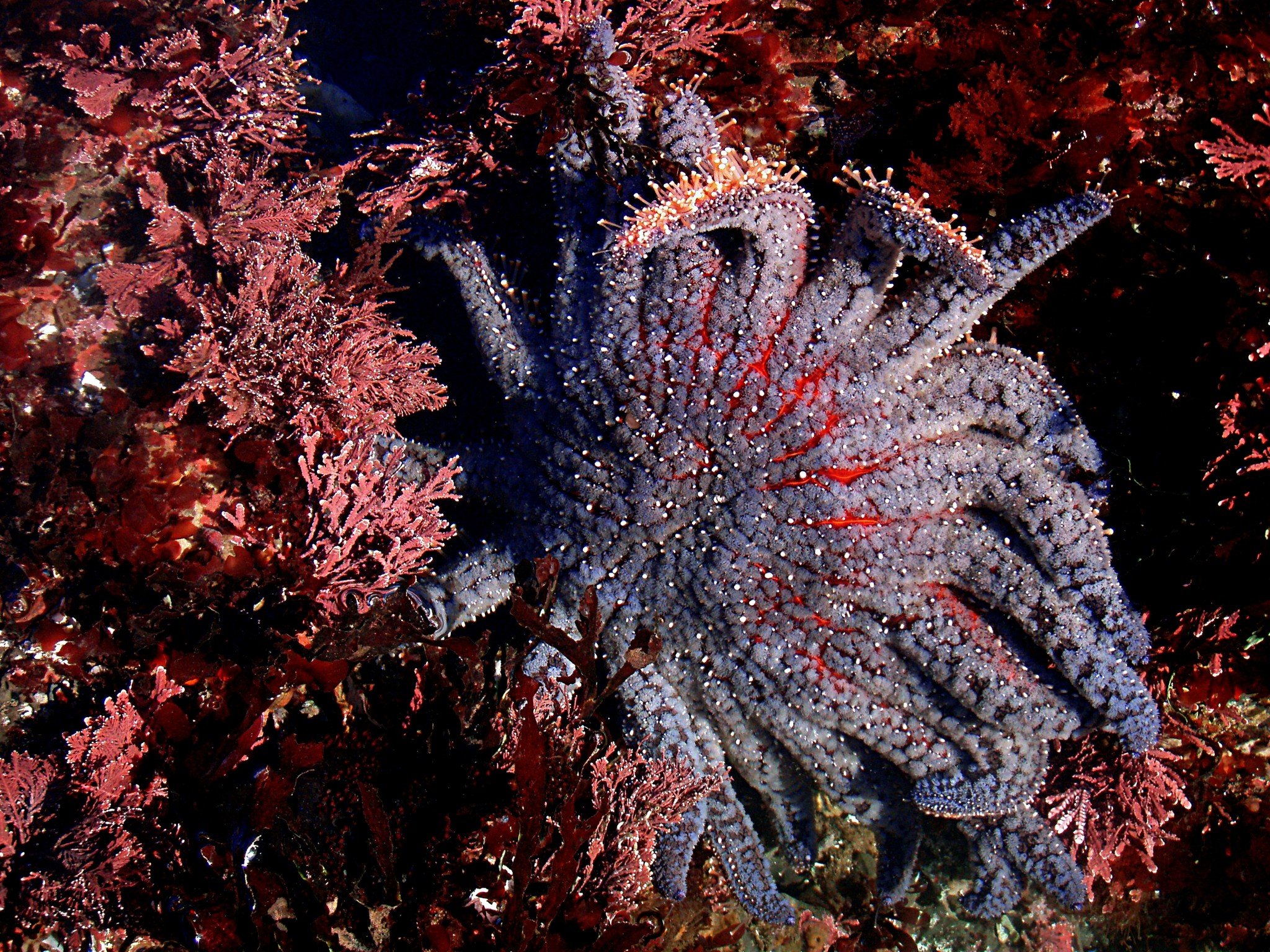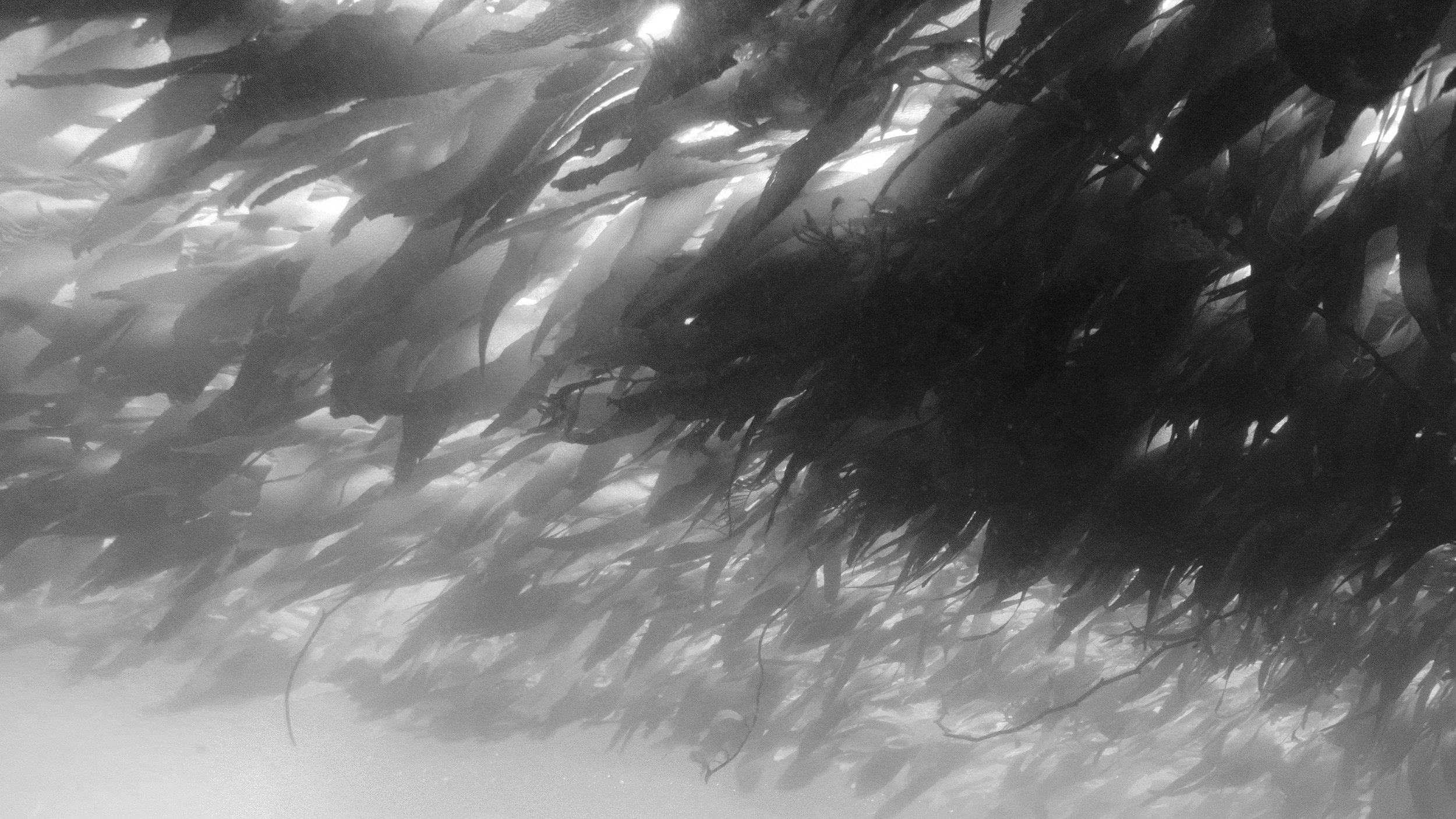
Why the Sunflower Star?
Sunflower Stars are a Key Pillar of Kelp Forest Life
-

Sunflower Stars Prey on Urchins
Purple urchins are one of sunflower stars’ main source of prey. In a healthy kelp forest ecosystem, sunflower stars can help regulate urchin populations, preventing urchin overgrazing. Even the presence of a sunflower star can prevent urchin incursion into the kelp forest, because when they encounter a predator, urchins initiate escape behavior and send chemical signals alerting others nearby.
-

Urchin Overgrazing Decimates Kelp Forests
When kelp is plentiful, urchins passively graze on drift kelp and live mostly in rock crevices. When kelp is scarce, purple urchins change their behavior to active foraging, becoming generalist foragers using their strong jaws to scrape any and all algae and invertebrates off the rock. More than 96% of Northern California’s kelp forests have disappeared in the last 10 years, in large part due to urchin overgrazing.
-

Kelp Forests Are Vital to Our Planet
Kelp forests provide a home for over a thousand different species of marine organisms, from the tiniest of nudibranchs to charismatic rafts of otters and sea lions. They feed abalone, juvenile smelt and herring, and other commercially important species. Kelp forests capture and store carbon, reduce coastal erosion, delight divers, and attract residents and tourists to the Pacific Coast.

A Devastating Crash
In 2013, sea star wasting syndrome (SSWS) began decimating sea star populations along the west coast of North America, coinciding with a marine heatwave thought to be driven by climate change. While over 22 species were impacted by this disease, sunflower stars were especially susceptible, with populations plummeting throughout much of their southern range to the point that researchers believe they are functionally extinct in those areas. Sunflower stars have not been sighted south of the Bay Area since 2018.


